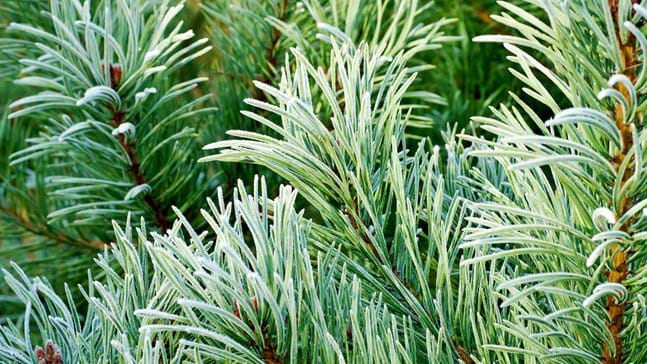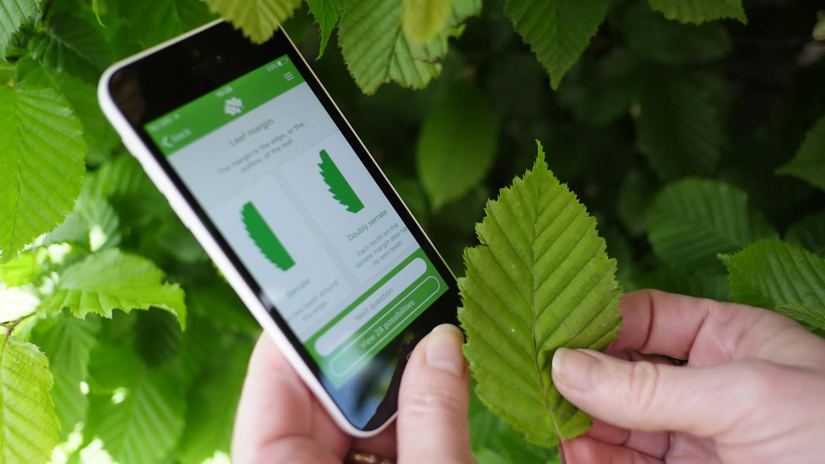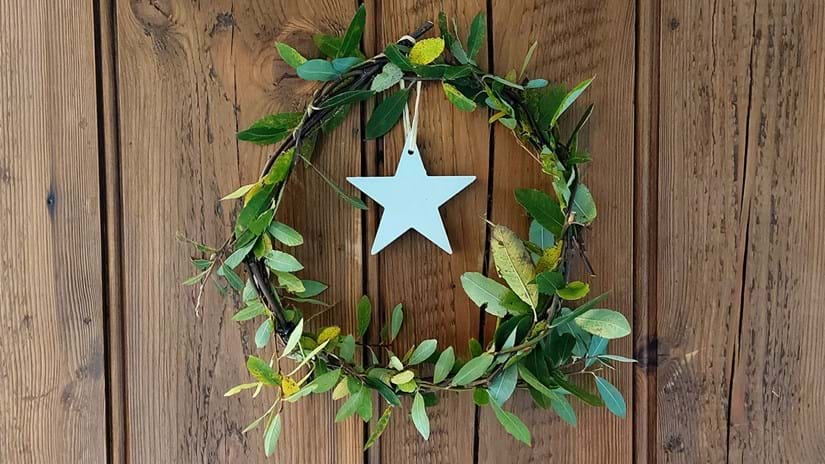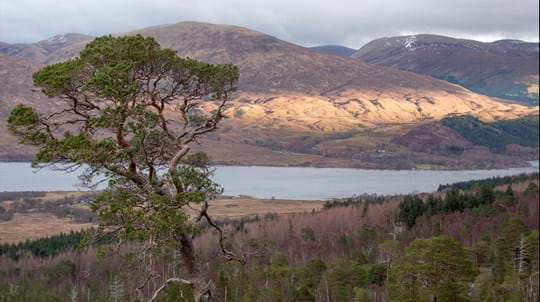
Credit: Brian Hird (Natural World) / Alamy Stock Photo
Leaves
The needle-like leaves are blue-green and slightly twisted, and grow in pairs on short side shoots.
Towering in the glen, the Scots pine is a truly stunning tree. It is one of only three native conifers, and our only native pine. It’s the perfect home for iconic Scottish wildlife, such as the red squirrel, capercaillie, Scottish crossbill and the Scottish wildcat.
Common name: Scots pine
Scientific name: Pinus sylvestris
Family: Pinaceae
Origin: native
Scots pine is an evergreen conifer native to northern Europe. Mature trees grow to 35m and can live for up to 700 years. The bark is a scaly orange-brown, which develops plates and fissures with age. Twigs are green-brown and hairless.
Look out for: mature trees which have reddish bark towards the crown of the tree and brown bark towards the base. The needles are twisted and when broken, they have a fine white fringe of hairs.
Identified in winter by: its evergreen needle-like leaves which are present all year-round.

Credit: Brian Hird (Natural World) / Alamy Stock Photo
The needle-like leaves are blue-green and slightly twisted, and grow in pairs on short side shoots.

Credit: Richard Becker / WTML
Scots pine is monoecious, meaning both male and female flowers grow on the same tree. Male flowers comprise clusters of yellow anthers at the base of shoots. Female flowers are small, red-purple and globular, and grow at the tips of new shoots.

Credit: Nature Photographers Ltd / WTML
After pollination by wind, the female flowers turn green and develop into cones. They mature the following season, so there are always cones of different ages on the one tree. Mature cones are grey-brown with a raised, circular bump at the centre of each scale.

Download our free Tree ID app for Android and iPhone to identify the UK's native and non-native trees. It's an A-Z tree guide in your pocket.
Download the appScots pine is the only truly native pine in the UK. It thrives in heathland and is widely planted for timber, but is also found in abundance in the Caledonian pine forest in the Scottish Highlands.
The Caledonian forest is a priority habitat under the UK Biodiversity Action Plan and is home to rare species such as the creeping lady’s tresses and lesser twayblade orchids; the Scottish wood ant and Rannoch looper; and the capercaillie, crested tit and Scottish crossbill. Mammals include red squirrel, pine marten and Scottish wildcat. Scots pines in southern England are also the main caterpillar foodplant for the pine hawk-moth.
Evidence indicates that Scots pine supports around 1,600 species. Crucially, 215 of them are only found on Scots pine, highlighting the importance of remnant Caledonian pinewoods.
The needles on young trees grow longer than those on older trees.
There’s not much folklore associated with the Scots pine, although there is some history of spiritual significance which can be traced back to Celtic times. It is thought that in England, Scots pines were planted around farmsteads as windbreaks, and clusters of pines growing along old droveways helped travellers find out where they were going in inclement weather.
In 2014, the Scots pine was voted the national tree of Scotland.
Scots pine timber is one of the strongest softwoods available and is widely used in the construction industry and in joinery. It is used in the manufacture of telegraph poles, pit props, gate posts and fencing. The tree can also be tapped for resin to make turpentine. Other uses include rope made from the inner bark, tar from the roots and a dye from the cones. Dry cones can be used as kindling for fires.

Helen Keating • 05 Dec 2022
Transform your home into a woodland wonderland this Christmas with our easy ideas for festive, foraged home decor.
Be inspiredScots pine is susceptible to red band needle blight, root and butt rot, needle cast disease and pine stem rust, which leads to cankers and distorted branches. The pine tree lappet moth can cause serious defoliation of Scots pine and may threaten pine forests in Scotland.

Support us
Old and gnarled Scots pines. Celebrated ospreys. Breathtaking loch-side views. Thanks to your generous support, some of Scotland’s finest and most fragile treasures now have the chance to thrive.

Shop
We have single trees and tree packs to meet your needs, from wildlife to woodfuel. Delivery is free.
External link